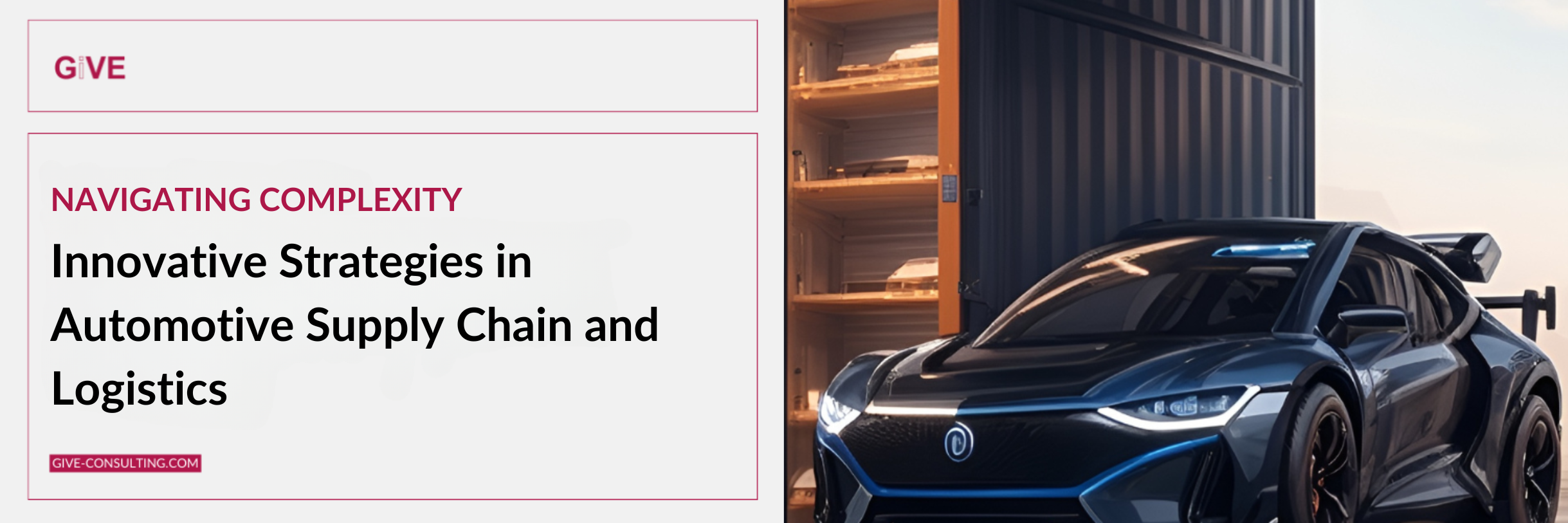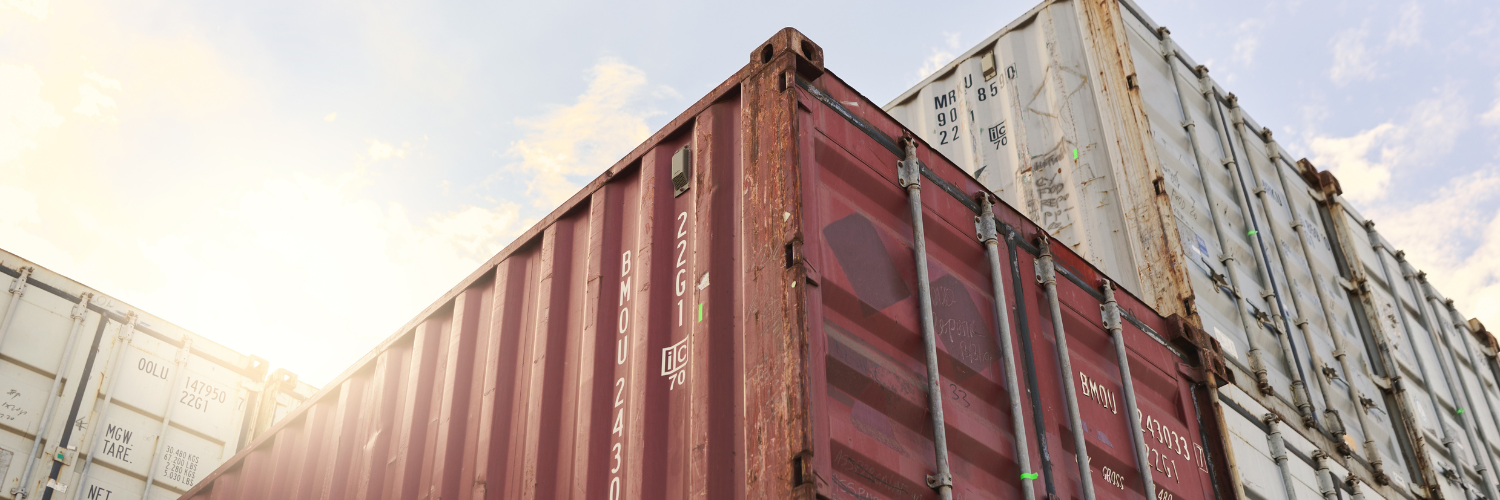
Photo credit: PhotoMIX-Company für Pixabay (via Canva pro)
Supply chains and logistics in the automotive industry: challenges and innovations
The automotive industry is one of the most economically relevant and innovative sectors in the world. With several million vehicles produced every year, it has to fulfil the needs and expectations of its customers. A flexible supply chain and efficient logistics are crucial for this to run smoothly. Delays in delivery and the resulting high costs are also challenges for the German automotive industry if it is to survive in the global market.
In this comprehensive blog post, we will shed light on the essential aspects of the supply chain and logistics in the automotive industry. We will look at concepts such as just-in-time (JIT) and just-in-sequence (JIS) in automotive production, global sourcing and supplier management, electronics and parts logistics as well as green logistics and sustainability in the automotive industry.
Just-in-Time (JIT) and Just-in-Sequence (JIS) in automotive production
Just-in-time (JIT) is a production principle that aims to minimise stock levels by delivering materials and parts exactly when they are needed. This approach reduces the amount of capital tied up in stock and significantly lowers storage costs. However, this requires a detailed analysis of the processes and a corresponding infrastructure.
Although just-in-time (JIT) is undoubtedly an efficient method of reducing inventory levels, there are also some challenges and potential drawbacks that should be considered. For one, the lack of a sufficient buffer of stock can lead to problems when unforeseen events occur, such as supply shortages or quality issues with the materials delivered. In such cases, production can be delayed or even come to a standstill.
Furthermore, JIT requires close co-operation with suppliers and a high degree of trust in their performance. If one of the suppliers has difficulties or fails, this can have a significant impact on the production process.
In addition, a well-established infrastructure is required to successfully implement the just-in-time principles. Among other things, this includes an effective supply chain management system and precise planning and coordination of all processes involved.<br><br>Finally, it is important to remember that JIT is not suitable for every type of company or industry. Especially in industries with unstable market conditions or high demand volatility, inventories can serve as a buffer and provide flexibility.

Overall, it can be said that just-in-time undoubtedly offers advantages, but also entails certain risks. It is therefore essential to carefully analyse your own production processes, market conditions and risk factors in order to assess the suitability of this principle for your company.
Just-in-sequence (JIS) builds on JIT by additionally ensuring that materials and parts are delivered in the correct order to optimise the production process. This is particularly crucial in the automotive industry, as vehicle assembly is highly sequential and precise. A component is therefore delivered and ends up in production immediately. Ideally, storage is not necessary.
Although just-in-sequence (JIS) is seen as an efficient method of optimising the production process, there are some aspects to consider that speak against this approach. Firstly, unforeseen changes may occur in the production schedule, which may mean that certain parts can no longer be delivered in the correct order. In such cases, extensive adjustments would have to be made or even new deliveries organised, which can lead to additional costs and time delays.
Furthermore, JIS requires very close co-operation between the manufacturer and its suppliers. This means that a high level of coordination and communication is required to ensure that all parts are delivered on time and in the right order. However, this close coordination process can be complex and requires good planning and possibly the use of specialised IT systems.
It is also important to bear in mind that JIS is also associated with a certain level of risk. For example, if a supplier fails or has difficulties delivering parts on time, this can bring the entire production process to a standstill. A certain degree of redundancy or buffer stocks could serve as a safety net here.
It should therefore be borne in mind that although JIS offers many benefits, such as reducing storage costs and optimising production flow, it can also present challenges that require careful planning and coordination.

The advantages of JIT and JIS
One example of the use of JIT and JIS is interlocking cooperation between car manufacturers and their suppliers. In addition, car manufacturers can achieve continuous improvement of their production processes through lean management and Six Sigma methods. If all these tools are optimally interlinked, both concepts can streamline production, conserve resources and reduce costs. This is because costly warehousing is no longer necessary with either concept.
Global sourcing and supplier management in the automotive industry
Global sourcing is the procurement of materials, parts or services from different countries or regions. The main objectives of sourcing materials from different sources are to reduce costs, increase quality, gain access to new technologies or markets and diversify risk.
Although global sourcing offers many advantages, there are also some potential disadvantages and challenges that should be considered. For example, sourcing materials from different countries can lead to longer delivery times, especially when it comes to long-distance transport. This can lead to delays in production or in the project schedule.
In addition, cultural differences and language barriers can pose a challenge when communicating with international suppliers. Misunderstandings and different expectations can arise, which can lead to quality problems or conflicts.
Another aspect is the risk of political instability or economic crises in the sourcing countries. Sudden changes in government policy, trade agreements or currency fluctuations can have an impact on the availability of materials or lead to increased costs.
It should also be noted that global sourcing can also raise environmental issues. Transporting goods over long distances causes higher CO2 emissions and therefore contributes to environmental pollution.
It is important to weigh up these potential disadvantages and take appropriate measures to minimise them. Careful selection of suppliers, clear communication and contractual agreements, as well as effective risk management, can help realise the potential of global sourcing.
Supplier management
As the automotive industry relies heavily on global sourcing, effective supplier management is crucial. Automotive manufacturers should monitor and realistically assess the performance of their suppliers. Based on this data, adjustments should be made where necessary. Effective risk minimisation strategies are essential for a smooth supply chain.
This is because delivery problems with important components can jeopardise production, which can lead to enormous additional costs. It is therefore important to take countermeasures. These include diversifying the supplier base, forming strategic partnerships, working closely and transparently with key suppliers and implementing risk management plans.
Electronics and parts logistics in the automotive industry
Electronics and parts logistics is a crucial part of the supply chain in the automotive industry. This is because vehicles today are much more dependent on electronic components that ensure function, safety and the driving experience. Electronics and parts logistics should therefore be given special priority, especially as components can often only be sourced in limited quantities and from certain countries, such as Taiwan.
The special requirements and challenges in this area of parts procurement are as follows:
Although electronics and parts logistics undoubtedly play an important role in the automotive industry, there are also some points that argue against prioritising this area. Firstly, it can be argued that vehicles are not exclusively dependent on electronic components, but also require mechanical and other components. These may also be in short supply or have to be sourced from certain countries.
It should also be borne in mind that dependence on certain countries such as Taiwan can also be associated with risks. Political instability or natural disasters could lead to the supply chain being interrupted and thus have a negative impact on the availability of components.
It should also be noted that many car manufacturers have already taken measures to make their supply chains more resilient. This includes, for example, building strategic partnerships with suppliers and using technology to monitor stock levels and processes.
Overall, it can be said that while electronics and parts logistics are undoubtedly important, other aspects of the supply chain should also be considered and measures taken to minimise potential risks.
The automotive industry already uses various methods to optimise electronics and parts logistics:
- The standardisation of parts and the modularisation of electronic components make it possible to streamline and speed up logistics processes.
- Automated warehouses and the digitalisation of processes improve efficiency and accuracy.
- The use of intelligent packaging and labelling enables better traceability.
- Artificial intelligence and machine learning support logistics decisions by analysing data and recognising patterns.
In short, the automotive industry pays great attention to electronics and parts logistics, as they have a direct influence on product quality and customer satisfaction.

Green logistics and sustainability in the automotive industry
In recent years, the automotive industry has increasingly begun to focus on green logistics and sustainability. These concepts are urgently needed in view of the industry's considerable ecological footprint. This is because the industry contributes significantly to greenhouse gas emissions, energy consumption, resource consumption and waste generation.
Green Logistics endeavours to reduce the ecological footprint of logistics activities. This can be achieved through measures such as the use of more environmentally friendly means of transport, route optimisation, the use of renewable energy and the reduction of waste.
Ideally, the automotive industry should find a balance and fulfil the needs of the present without endangering the environment and compromising the living environment of future generations. This requires a number of ecological, social and economic aspects to be taken into account in logistics decisions.
The automotive industry is therefore pursuing various approaches to promote green logistics and sustainability:
- Alternative fuels and energy sources can help to reduce the footprint. The use of electric vehicles in combination with renewable energies or the use of green hydrogen in logistics can reduce CO2 emissions.
- The development and use of low-emission or zero-emission vehicles also significantly reduces the environmental footprint of the entire supply chain. These can also be electric forklift trucks or other vehicles within the production site.
- Optimising transport volumes and routes reduces CO2 emissions. Shorter transport routes and the efficient utilisation of vehicles help to reduce emissions.
- The circular economy and recycling ensure that fewer parts or materials have to be delivered, which saves on transport routes. Recycling and the reuse of parts also minimise waste and reduce the overall consumption of resources.
- Taking social and ethical aspects into account when making logistics decisions contributes to the social responsibility of automotive companies. This also includes, for example, the selection of partners who comply with social and ethical standards.
The good news is that the automotive industry recognises the urgency of green logistics and sustainability in the face of global environmental regulations and growing customer interest in environmentally friendly products. Time is of the essence and implementation should therefore take place on a broad front and in the various areas of the supply chain.
By consistently integrating these principles into the supply chain and logistics, the industry can make a decisive contribution to reducing its ecological footprint and also remain competitive.
Logistics and supply chains in the automotive sector: changing framework conditions and diverse opportunities
The automotive industry is facing ever-increasing challenges and changes in the supply chain and logistics. Concepts such as just-in-time and just-in-sequence have made production more efficient, while global sourcing is expanding the diversity of the supplier base. Electronics and parts logistics are becoming increasingly complex due to the growing importance of electronic components and parts. Finally, green logistics and sustainability are crucial to minimising the industry's environmental impact and fulfilling social responsibility.
Due to changing conditions and requirements, the automotive industry needs to invest in innovative solutions and technologies in order to continue to ensure efficient, sustainable and customer-centred supply chains and logistics processes. This is crucial in order to meet customer needs while minimising environmental impact.




